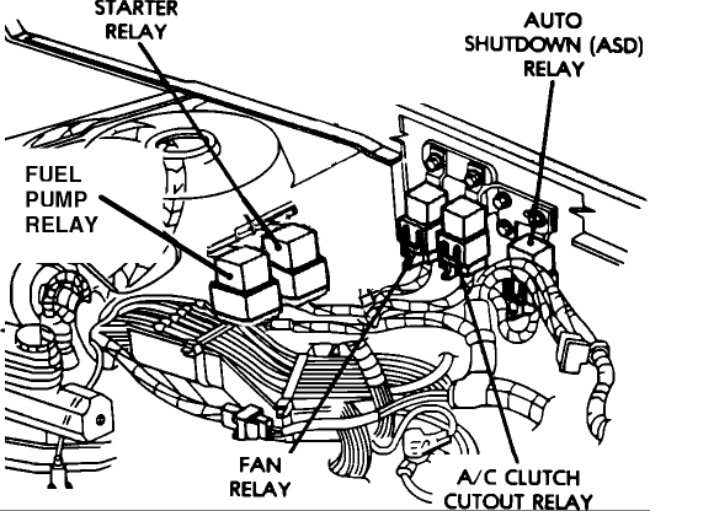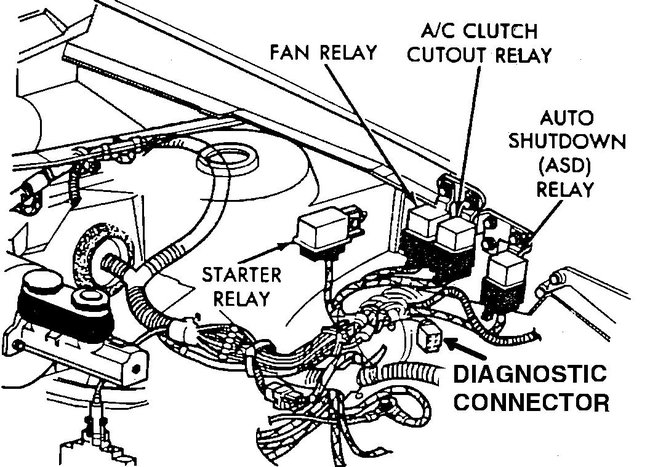Dandy. Having spark rules out all of the common stuff and just leaves the fuel pump circuit. I can only find a service manual for a 1993 model, and I think the fuse box for a 1994 is different. Do you have a fuse box under the hood, driver's side, or do you have six relays bolted to the body, three on the left inner fender and three in front of the left strut tower? I am trying to point out which one is for the fuel pump, woops, I just found my 1994 manual and it looks like you have individual relays yet like on a1993 model. If that is right, the fuel pump relay is on the strut tower, closest to the center of the car, of the three.
There are a couple of ways to approach this. You can use a test light back at the tank to test for voltage. As I recall, the connectors are on the right side where you can reach them without lowering the tank. Unplug the fuel pump connector and test on the dark green/black wire. It is important to understand there will only be voltage there for one second after turning on the ignition switch so you are either going to need a helper to turn the switch on or you are going to have to prop the test light up so you can see it from inside the car. You can use a digital voltmeter too but often they do not respond fast enough. Also, voltmeters draw almost no current to do their testing. Test lights draw plenty of current to show up a high-resistance break in the circuit that can prevent the pump from running but be enough for a voltmeter to give an acceptable reading. The test light, in this case, is more accurate.
If you see voltage for that first one second, the relay and wiring to the tank are okay. With the connector plugged in, you should be hearing the hum of the pump for one second when you turn on the ignition switch.
As an alternative, you can bypass the fuel pump relay with a stretched out paper clip. You will not even need to turn on the ignition switch for any of the tests. Unplug the relay's connector and jump between the dark green/black wire and the red/white wire. They will be two of the three fatter wires. Doing that will send voltage to the fuel pump just as though the engine was running. If the pump does not run, you can take voltage readings now anywhere in the circuit.
If you find voltage at the pump's connector, either the pump is stuck or the terminal in the connector is spread or corroded and not making a good connection. We have to consider a bad ground wire too. It is fairly common for the pump to not start running due to worn brushes in the motor. Banging on the bottom of the tank will often get them going, and that works even better if you do it while voltage is applied. Once the pump is running, Chrysler pumps almost never quit and let you sit on the side of the highway. They will fail to start up but not quit until the engine is shut off. GM pumps are known to suddenly quit and leave you stranded on the side of the road in a puddle of tears.
Holler back after you have made these tests.
Saturday, December 3rd, 2011 AT 11:31 PM






